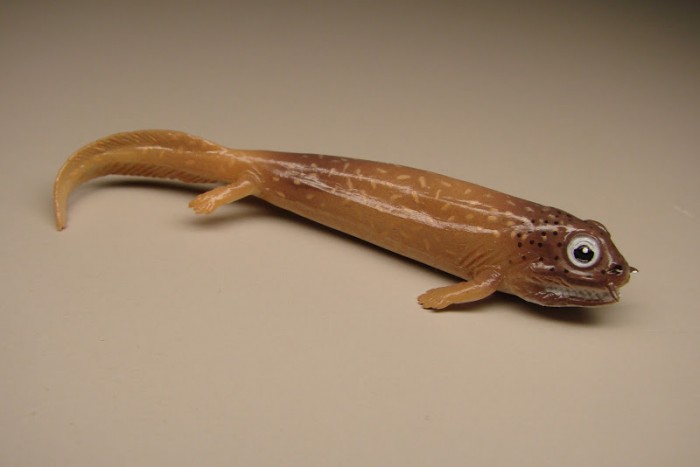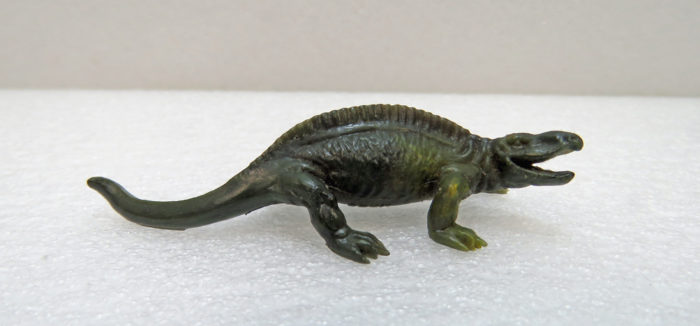Review and photographs by bmathison1972, edited by Dinotoyblog
Arthropleura armata is an extinct species of millipede that lived in North America and Europe during the Carboniferous Period. Millipede figures are rare in toy/model/figure form, and if you have all your fingers intact, you can count on one hand the number of such figures available!
Age: Carboniferous
Review: Dimetrodon (Revell/Prehistoric scenes by Aurora)
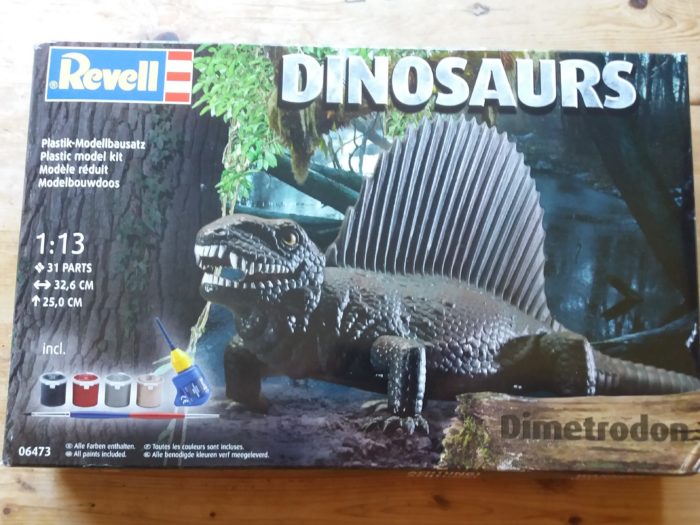
3.7 (9 votes)
Aurora seemed to be quite an interesting line. Though showing most of the dinosaurs and other prehistoric creatures in the form of movie monsters, they still provide great figures with articulation and scenery to match. Their models were later reissued by Revell, allowing people to get a selection of their models again.
Review: Ducabrook Rhizodont (Yowie)

4.3 (7 votes)
Review and photographs by Tim Sosa
Yowie is a Perth-based company that markets nature-themed toys in little chocolate eggs. These days they have some extant animals that you can buy at places like World Market (at least in the United States), but around a decade ago they had an Australia-only line of prehistoric figures called Lost Kingdoms.
Yowie is a Perth-based company that markets nature-themed toys in little chocolate eggs. These days they have some extant animals that you can buy at places like World Market (at least in the United States), but around a decade ago they had an Australia-only line of prehistoric figures called Lost Kingdoms.
Review: Dusty the Diplocaulus (Paleo Pals)

4.9 (8 votes)
“I dig these things.”
Dr. Robert Bakker was speaking more literally than figuratively when making the above statement regarding the genus in question (he has excavated numerous fossils of this particular animal), but there is also a genuine seal of approval in there from the esteemed paleontologist.
Dr. Robert Bakker was speaking more literally than figuratively when making the above statement regarding the genus in question (he has excavated numerous fossils of this particular animal), but there is also a genuine seal of approval in there from the esteemed paleontologist.
Review: Medusa (Bullyland)
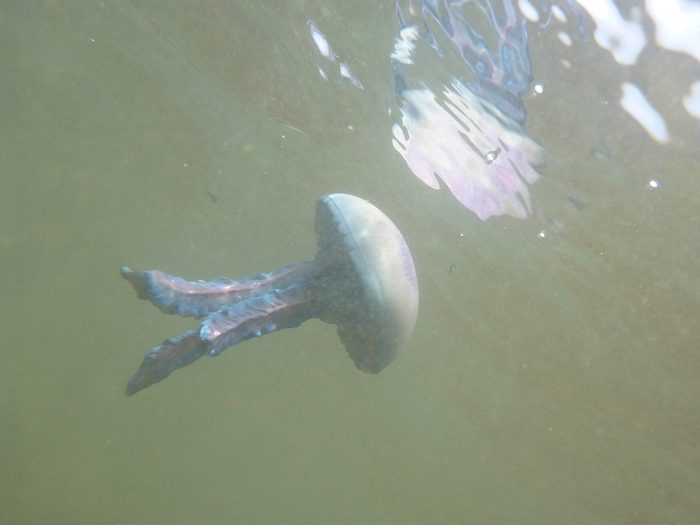
4.6 (12 votes)
Summer melts us here since weeks, so time for another wet review….
Today I want you to introduce you to one of those creatures everybody knows, but knows almost nothing about, a jellyfish. Jellyfish are a very very old group of animals, they date back to the famous Ediacarian, more than 600 mya.
Review: Meganeura (Dinotales Series 4 by Kaiyodo)

5 (5 votes)
Review and Photos by Dr Andre Mursch (“Brontodocus”). Edited by Plesiosauria.
Meganeura monyi was a gigantic insect belonging to the extinct Protodonata and superficially resembling a dragonfly. Its remains come from the Stephanian (late Carboniferous) of France and England and are approximately 300 million years old.
Meganeura monyi was a gigantic insect belonging to the extinct Protodonata and superficially resembling a dragonfly. Its remains come from the Stephanian (late Carboniferous) of France and England and are approximately 300 million years old.
Review: Monanthesia and Cycadeoidea (CollectA)
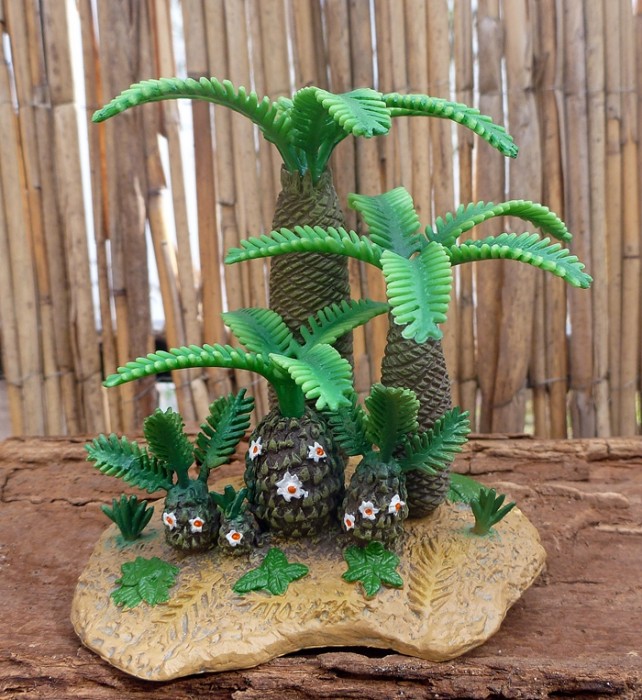
5 (14 votes)
Review and photos by Lanthanotus, edited by Suspsy
Greens, stems, and leaves, but no teeth, no blood, no gore . . . no wonder plants seldom provide more than background for movies or our dinosaur collections. Day of the Triffids (1962) is the classic plant horror film par excellence, where seemingly harmless plants attack and kill humans and charge to take over world domination within days (for those of you that can’t stand classic B-movies or modern semi-quality TV adaptations of them, Splinter may be a more thrilling choice, though the antagonist is !SPOILER ALERT!
Greens, stems, and leaves, but no teeth, no blood, no gore . . . no wonder plants seldom provide more than background for movies or our dinosaur collections. Day of the Triffids (1962) is the classic plant horror film par excellence, where seemingly harmless plants attack and kill humans and charge to take over world domination within days (for those of you that can’t stand classic B-movies or modern semi-quality TV adaptations of them, Splinter may be a more thrilling choice, though the antagonist is !SPOILER ALERT!
Review: Prehistoric amphibians (Play Visions)
Review: Prehistoric Landscapes Cycad by Safari Ltd.

4.9 (11 votes)
Review and photographs by Lanthanotus, edited by Suspsy
Here comes another (unfortunately retired) one of the prehistoric plants produced by Safari Ltd, the other two being reviewed here. I did not include it in the first review as my usual retailer didn’t have it in stock anymore and it took some time to find one for a reasonable price.
Here comes another (unfortunately retired) one of the prehistoric plants produced by Safari Ltd, the other two being reviewed here. I did not include it in the first review as my usual retailer didn’t have it in stock anymore and it took some time to find one for a reasonable price.
Review: Rayonnoceras (Series 2 by Kaiyodo)

5 (7 votes)
Review and photographs by Indohyus, edited by Suspsy
In my last review, I mentioned how Palaeozoic creatures are rarely produced in toy form. There is, however, a group that is even rarer: prehistoric invertebrates. Outside of toob sets and the Bullyland figures, they are incredibly hard to find immortalized in plastic.
In my last review, I mentioned how Palaeozoic creatures are rarely produced in toy form. There is, however, a group that is even rarer: prehistoric invertebrates. Outside of toob sets and the Bullyland figures, they are incredibly hard to find immortalized in plastic.





